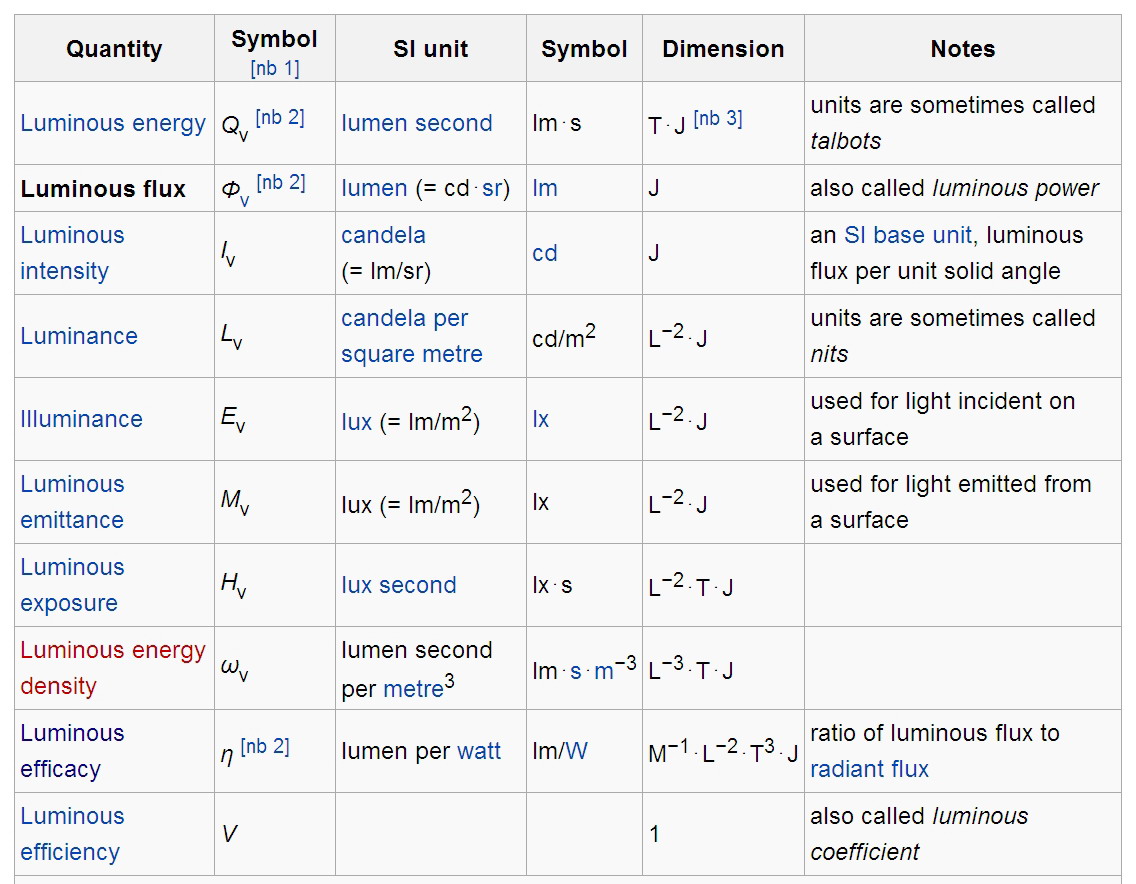In photometry, luminous flux or luminous power is the measure of the perceived power of light. It differs from radiant flux, the measure of the total power of light emitted, in that luminous flux is adjusted to reflect the varying sensitivity of the human eye to different wavelengths of light.
Units
The SI unit of luminous flux is the lumen (lm). One lumen is defined as the luminous flux of light produced by a light source that emits one candela of luminous intensity over a solid angle of one steradian. In other systems of units, luminous flux may have units of power.
Weighting
The luminous flux accounts for the sensitivity of the eye by weighting the power at each wavelength with the luminosity function, which represents the eye's response to different wavelengths. The luminous flux is a weighted sum of the power at all wavelengths in the visible band. Light outside the visible band does not contribute. The ratio of the total luminous flux to the radiant flux is called the luminous efficacy.
Contexts
Luminous flux is often used as an objective measure of the useful power emitted by a light source, and is typically reported on the packaging for light bulbs, although it is not always prominent. Energy conscious consumers commonly compare the luminous flux of different light bulbs since it provides an estimate of the apparent amount of light the bulb will produce, and is useful when comparing the luminous efficacy of incandescent and compact fluorescent bulbs.
Luminous flux is not used to compare brightness, as this is a subjective perception which varies according to the distance from the light source.






